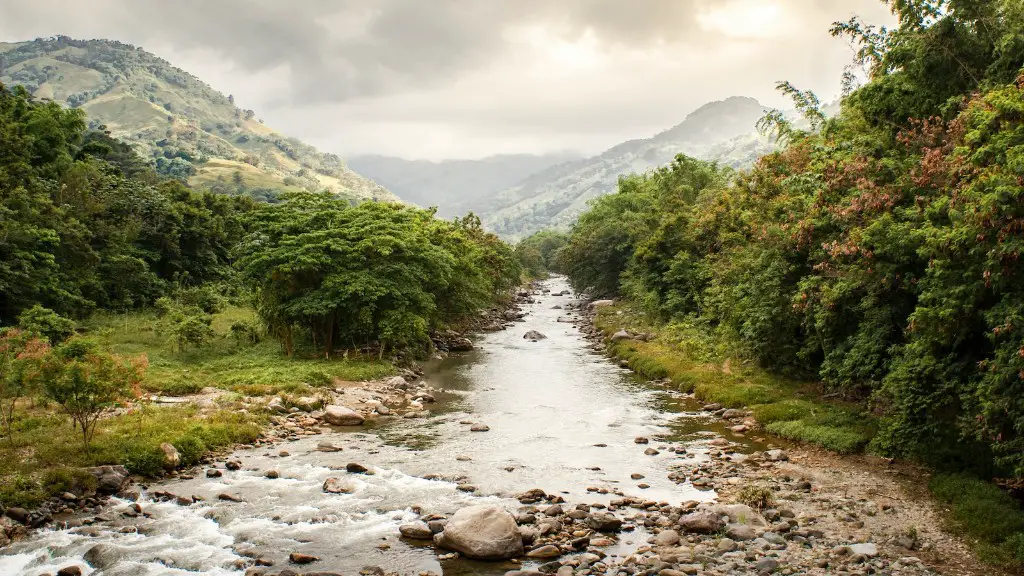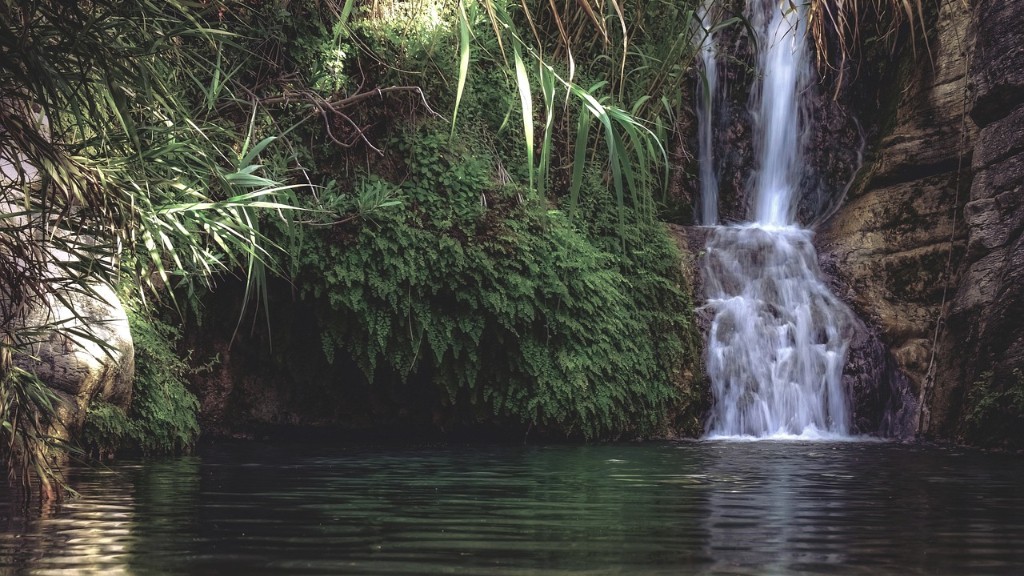The Ganges is one of the great Rivers of the World. It is just over 2525 kilometers long and is located in the northern part of India. The Ganges is important for many reasons. It is a major source of water for irrigation and domestic use for millions of people living in the Gangetic Plain. It is also a major source of cheap hydroelectric power. In addition, the Ganges is important for transportation. Barges can carry large amounts of goods up and down the river.
The Ganges river is important economically because it provides a source of fresh water for millions of people, it is a source of hydroelectric power, and it is also used for irrigation.
Why is the Ganges River so important?
The river Ganga is an important part of Indian culture and religion. For many Hindus, the river is considered to be a holy mother who provides freshwater and life to the millions of people living in India. The river is also used for many practical purposes such as fishing, irrigation, and bathing.
The Indo-Gangetic Plains is one of the most populous and economically important regions in India. It is home to more than 600 million Indians, close to half the country’s population. Over 40 percent of the country’s GDP is generated in this region.
The basin provides more than one-third of India’s surface water, 90 percent of which is used for irrigation. The plains are also a key transportation corridor, with several major rivers and a dense network of canals and roads.
What are the economic activities performed in the Ganga basin
The Ganga-Brahmaputra basin is one of the most fertile regions in the world and is blessed with ample rainfall. The main activity of the people living in this region is agriculture. Paddy is the main crop grown here, followed by wheat, maize, sorghum, and millets. Cash crops like sugarcane and jute are also grown in this region. The climate and soil conditions here are ideal for agriculture, and this has resulted in the region becoming one of the main food baskets of India.
The Ganges valley in Uttar Pradesh and Bihar has a long history of irrigation. The first canals were built by the Mughal Emperor Akbar in the 16th century. These canals were used to irrigate the crops of sugarcane, cotton, and oilseeds. The older canals are mainly in the Ganges-Yamuna Doab (doab meaning “land between two rivers”). In the 18th and 19th centuries, the British government built a series of canals in the Ganges valley. These canals were used to transport goods and people between the two states. The British also built a dam in the Ganges valley, which increased the water supply for irrigation. Today, the Ganges valley is one of the most productive agricultural regions in India. The irrigation canals have played a major role in this success.
What are 5 facts about the Ganges River?
The Ganges River is a river located in India and Bangladesh. It is 1,680 miles long and is one of the most polluted rivers in the world. The river is known for its religious significance to Hindus and its beauty.
The River Ganges is one of the most important rivers in the world. Not only does it provide water for the people of India, but it is also the home of the world’s largest civilization. The river is so important to the people of India that it is considered to be a holy site. Every year, millions of people travel to the river to bathe in its waters.
What are the three main economic uses of river?
d
Rivers are a vital source of water for many communities around the world. They provide fresh water for drinking and irrigation, and are also a key part of many local ecosystems. In some areas, rivers are also used for transportation.
Rivers are dynamic and ever-changing, and their health is a reflection of the surrounding environment. Healthy rivers provide many benefits to people and nature, while polluted or neglected rivers can cause problems for local communities.
There are many things that people can do to help protect and restore rivers. Some simple actions include picking up litter, planting trees along riverbanks, and avoiding activities that can pollute or damage rivers.
The economy of Rivers State is indeed booming because of the petroleum industry. However, it is very unfortunate that the state government has been unable to use this revenue to develop the state or meaningfully tackle poverty. It is very unfortunate that corruption and mismanagement have prevented the state from achieving its potential.
Is the Ganges River used for transportation
The Ganges River is an important part of Indian culture and religion. The river is seen as a sacred waterway that embodies the goddess Ganga. The people of India use the river for transportation, fishing, and hydroelectric energy. The river is also an important part of the Hindu religion.
The $3 billion plan to clean the Ganges river is behind schedule and large stretches of the river are still contaminated by toxic waste and sewage. This has forced Prime Minister Narendra Modi to intervene and take action to get the project back on track.
How many people rely on the Ganges for water?
The river and its tributaries are a vital water source for 400 million people. Most of India’s population can be found in the northern belt around the Ganges. The river and its tributaries provide water for drinking, washing, and irrigation. The Ganges is also a sacred river for Hindus and is a popular tourist destination.
The River Ganga is one of the most important rivers in India. It is considered holy by many Hindus and is also a vital source of water for agriculture and industry. The river is however, under threat from pollution and over-use. The government has now decided to clean up the river and this will have many benefits.
It will protect aquatic life of the river: The river is home to many different species of fish and other aquatic creatures. By cleaning up the river, these creatures will be protected from the pollution that threatens their lives.
It will prevent the agricultural pollution: The water from the River Ganga is used for irrigation in many parts of the country. If the river is polluted, this could lead to agricultural pollution which would be a disaster for farmers.
It will prevent people from getting water-borne diseases: Many people who live near the River Ganga come into contact with the water on a daily basis. If the river is polluted, they are at risk of contracting water-borne diseases.
How many kids did Ganga drown
One by one, seven sons were born and drowned by Ganga. When Ganga was about to drown the eighth son, Shantanu, devastated, could not restrain himself and confronted her. Finally, Ganga explained to King Shantanu about Brahma’s curse given to Mahabhisha and her.
The Ganges river is one of the most polluted rivers in the world, due in large part to the large amount of untreated sewage that is pumped into it every day. Experts estimate that more than 3000 million litres of untreated sewage from towns along the river are pumped into it every day. By the time it reaches Varanasi, whose untreated sewage (or most of it) is also pumped into the waters, it becomes a sewer and the sixth most polluted river in the world.
How much waste is in the Ganges?
The amount of plastic waste flowing out of the Ganges is estimated at more than 6,000 tons a year. This is a serious problem for the environment and the health of the people who live near the river.
The River Ganges (or Ganga) is one of the most important rivers in Asia. It flows from the Himalayas all the way to the Bay of Bengal, through some of Asia’s most densely-populated regions. Its river basin is more than 1 million sq km, and home to over 650 million people. The Ganges is an important source of water for irrigation and drinking water, as well as a major transportation route. It is also a sacred river in Hinduism, and is worshipped as a goddess.
What are 3 problems with the Ganges River in India
Water pollution in the Ganges river is a growing problem. The main causes of this pollution are the disposal of human sewage and animal waste, increasing population density, and disposal of industrial waste into the river. This pollution is causing serious health problems for the people who rely on the river for their water supply. The government needs to take action to reduce the amount of pollution in the Ganges river.
The Ganges basin is one of the most densely populated regions on earth. The untreated sewage dumped into the river, industrial waste, agricultural runoff, remnants of partially burned or unburned bodies from funeral pyres, and animal carcasses all contribute to polluting the Ganges. As a result, the river is highly polluted and poses a serious health hazard to those who use it for drinking, washing, and bathing.
Conclusion
The Ganges River is important economically because it is a major source of water for irrigation and industry in India. It is also a major transportation route for goods and people.
The Ganges River is very important to the economy of India. It provides water for drinking and irrigation, as well as a means of transportation.





